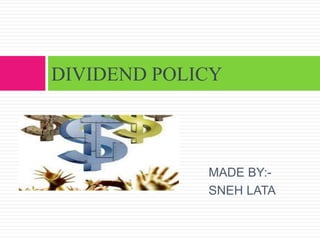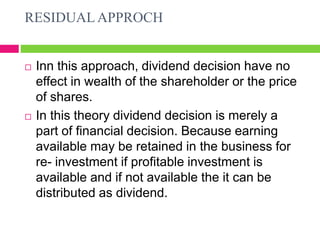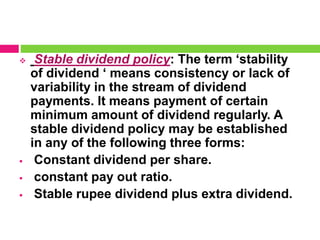The document discusses dividend policy and its various aspects. It defines dividend and explains the relevance and irrelevance concepts of dividend. It describes different approaches to dividend policy including the residual approach, MM model, Walter's approach and Gordon's approach. It also discusses determinants of dividend policy, types of dividend policies and forms of dividend including cash, stock and property dividends. The legal aspects of dividend payment are also summarized.




































